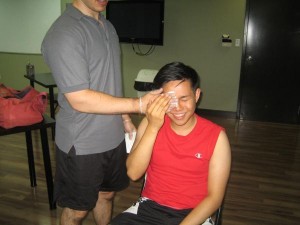Dry eye syndrome is defined by chronic lack of moisture in the eyes. If the condition is left untreated, it can lead to diminished vision and even put the individual at risk for eye infections.
Remember that tears are vital in maintaining the healthy state of the eyes. The tears are comprised of compounds that keep the eyes clean and moist. In case the production of tears is reduced, or the chemical composition has been altered, the symptoms of dry eye syndrome might manifest.
What are the indications?
The signs of dry eye syndrome might vary from one case to another. Some might suffer from several symptoms than others. The usual signs that might arise include the following:
- Dry, itchy eyes
- Redness
- Burning or stinging eyes
- Sensation of a foreign body in the eye
- Blurred vision
- Excessive tearing
The signs of dry eye syndrome might vary from one case to another. - Increased discomfort after reading or watching TV
What are the causes?
Some of the usual causes of dry eye syndrome typically include the following:
- Hormonal changes such as during menstruation, pregnancy, menopause or aging can alter the hormones
- Certain drugs can reduce the production of tears
- Some medical conditions such as rheumatoid arthritis, lupus and Sjogren’s syndrome
- Using contact lenses since they tend to absorb the tear film
- Chemical eye burns can disrupt the normal cell production on the cornea which results to irregularities in the surface
- Environmental factors such as windy dry climates, cigarette smoke exposure and air conditioning
- Computer use especially those who forget to blink can lead to dryness of the eyes.
Management of dry eye syndrome
It is sad to note that there is no available cure for dry eye syndrome. Nevertheless, various treatment options are available to manage the symptoms. The doctor can help in determining the suitable treatments for the individual.
Some of the commonly used treatment options include:
- Artificial tears – these are over-the-counter eye drops that mimic the tears which work by lubricating the eyes to relieve the symptoms. The composition of artificial tears tends to vary depending on the type of dry eye being treated.
- Ointments and gels – these are like artificial tears but last longer. Due to their thicker composition, they can cause blurred vision. In most cases, they are prescribed for night time use.
- Corticosteroids – given if the cause of dry eyes is inflammation. These drugs work by reducing the inflammation.
- Punctal plugs – silicone plugs are inserted by the doctor into the tear ducts to prevent the tears from draining out. This enables the natural tears to lubricate the eye surface.
- Eye masks – wearing a mask over the eye can prevent air from ceiling fans from aggravating the symptoms of the syndrome
- Immunomodulatory drugs – these are prescribed to alter the local immune system around the tear glands to increase the production of tears

